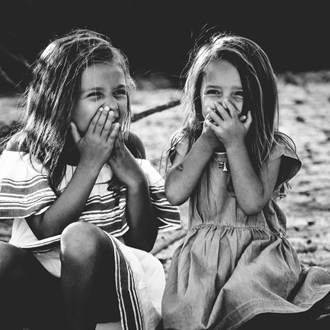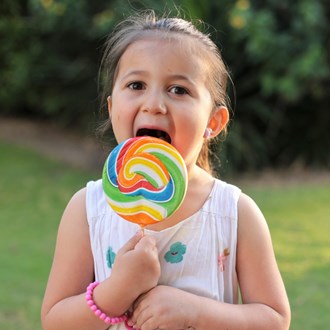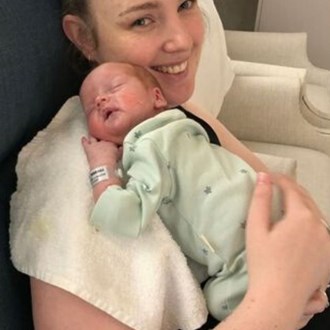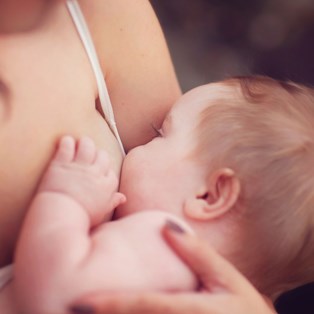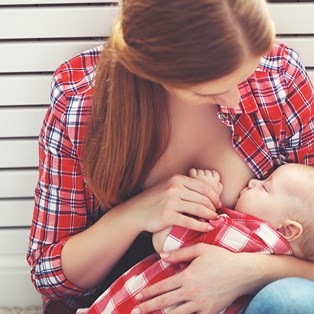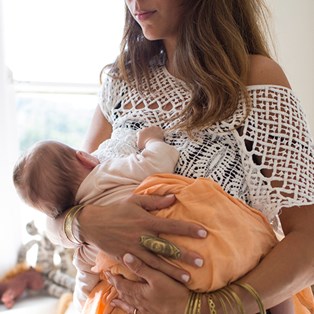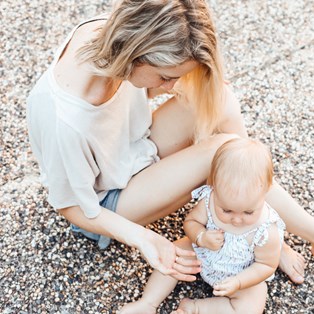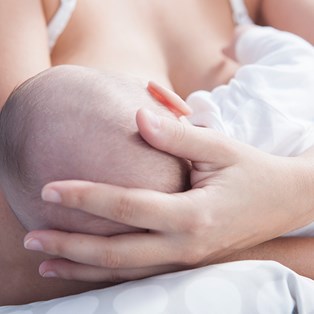How breastfeeding can affect your nipples

Here's the low-down from the experts.
By Practical Parenting team
January 28 2019
How does breastfeeding affect your nipples?
Breastfeeding can affect the size, shape, look and feel of a woman's nipples - but it's not always as bad as you may think. Here are the different ways your nipples might change, and what they mean.
1. Nipples can change colour
If your nipple is white after breastfeeding, it's called blanching and it can be a sign your baby isn’t latching on well and could be cutting off the blood supply to your nipple. This is called vasospasm. You might find you feel some burning, stinging or a shooting pain during feeding.
Vasospasm “happens when the blood vessels in the nipple spasm and tighten and stop blood flowing into the nipple,” says Jessica Leonard from the Australian Breastfeeding Association. “Applying warmth to the area can make a big difference, as cold weather can worsen the condition.” If you can fix the way bub latches on, you can fix the problem.
Vasospasm can also be a symptom of Raynaud’s Disease, - this is totally unrelated to breastfeeding and worth checking with your doctor.
LATCHING ON
To improve latching on during breastfeeding, you need to remember the baby is feeding from your breast NOT just your nipple.
“Start by remembering it’s called breastfeeding, not nipple feeding,” says Jessica Leonard from the Australian Breastfeeding Association. “Baby needs to have a mouthful of areola and breast tissue, not just the nipple.
"This means the nipple will go all the way to the back of bub’s palate, past the hard part of the roof of the mouth to the soft section at the back,” says Jessica.
To do this, position your baby in a chest to chest position with his chin touching the breast. When he opens, support your baby between his shoulder blades and give him a gentle push towards you, so his mouth levers up and over the nipple. Once attached, his top and bottom lips should flare outwards, like fish lips.
2. Sore, cracked or bleeding nipples
Ouch! If the nipple rubs on the baby’s hard palate, friction can cause grazes or cracks to form, which can be excruciatingly painful. To avoid this happening, lactation consultant Sue Nicholson suggests asking for help early. “I strongly advise attachment checks for the first 48 hours in hospital for every feed, with the first feed being so, so important,” she says.
If you can, try to breastfeed without a pillow by placing bub on your chest for baby-led attachment, or recline slightly once you’ve latched to take the weight off your arms.
3. Lipstick nipple
If your nipple comes out of your baby’s mouth in a flat shape, or slanted like a new tube of lipstick, it’s a sign your baby’s latch during breastfeeding isn’t deep enough. You may not feel any pain, but your baby might not be getting a full feed so your milk supply will suffer in the long-term and your baby might feel hungry.

Getty Images
4. Your nipples appear bigger or longer
Very few women have truly inverted nipples, which is when the nipple doesn't stick out away from the breast at all, but some do have fairly flat or slightly inverted nipples. When you breastfeed, the nipple can get drawn out once the baby latches on and starts feeding. In this case, your nipples won't actually grow, but once they’ve been drawn out they will probably stay in their new position, giving the appearance of getting bigger or longer.
BREASTFEEDING WITH FLAT OR INVERTED NIPPLES
Of all the different nipple shapes, mums worry most when theirs are flat or inverted. “For most mums who have an inverted nipple or two, gently massaging the nipple will encourage it to come out, and make attachment easier,” says Jessica.
Attaching to flat nipples can be challenging when your milk first comes in. “Engorgement can round breasts out and it becomes like trying to drink from a basketball,” says Jessica. Expressing some for comfort before attempting to attach can be helpful, as it softens the breast tissue surrounding the areola.
5. Droopy nipples
One lasting consequence from breastfeeding is that your nipples might look droopy, or settle lower than they were before, after you stop breastfeeding. Sadly there isn't much you can do to change this.
6. Dark or bumpy areolas
You may notice your areolas—the circular area of pigmented skin around your nipples—get darker and you may see more small bumps, which are called Montgomery’s tubercules. These changes actually happened during pregnancy, but many women don’t notice until breastfeeding, when they are spending a good deal of time looking at their breasts! Again, this is nothing to worry about. Often the skin returns to its original colour over the months after the birth but it might stay a darker colour.
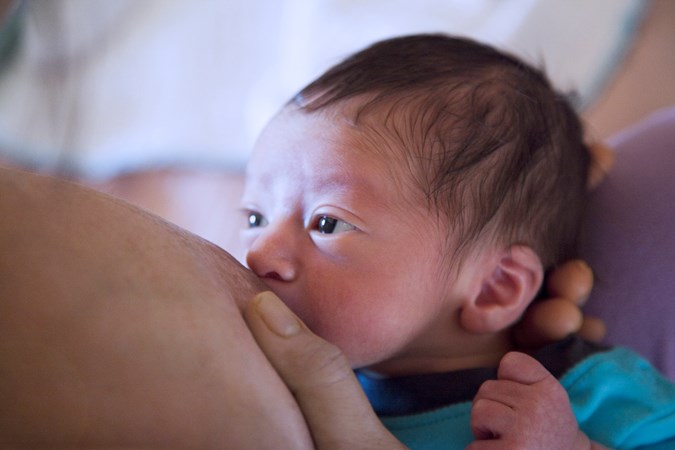
Getty
7. Nipple thrush
Thrush is a yeast infection that can be on your nipple, or in the baby’s mouth, or both. You may notice itchiness, pain or white flakes, and your baby may have white, cheese-curd like patches in his mouth. It is caused by the candida bug and can be a result of medication. “It can sometimes pop up after mum has been taking antibiotics,” says Jessica.
Your doctor can help you with treatment options for thrush, or help to diagnose other problems, such as bacterial infections like staph, or even dermatitis. In these situations, seeking the help of a health professional with a strong background in breastfeeding management is advised.
8. Compression stripes on your nipple
When attachment is too shallow, the nipple can be squashed into your baby’s mouth. This will be obvious when you can see a white line or ridge on the nipple when bub releases his latch. “It’s important to recognise when a baby slips off the nipple during the feed and to reattach,” says Sue, who focuses on teaching the mum to bring her baby towards the breast rather than bringing the breast to the baby.
9. Painful blisters on the nipple
Milk blisters can be white, yellow or clear and look like a pimple on your nipple. They can be extremely painful, and are caused by milk getting backed up behind a milk duct opening, which can lead to blocked ducts and potentially mastitis, a breast infection.
Blisters can often be treated at home with warm washcloths and saline solution but if it’s not going away, see your doctor or a lactation consultant.
THE HEALING POWER OF BREAST MILK
Breastmilk is anti-infective, anti-fungal and anti-microbial, so your own milk can help with any cuts, grazes and blisters. Hand expressing a little bit to smear on the nipples after feeds before air-drying is the Australian Breastfeeding Association’s main advice (after seeking help with attachment, of course!).
Sue also finds the use of lanolin ointment a handy solution. “It’s certainly helped a lot of mums,” she says.
Another commercially available product, which promotes moist wound healing, are compresses soaked in aloe vera. Many mums report that these soothe hot, stinging nipples, although Sue warns mamas not to overuse them as sometimes too much moisture can breed thrush or cause unpleasant rashes. It is advised to only pop these compresses in your bra for short stints, not leaving them there for the whole time between feeds.
BREASTFEEDING ACCESSORIES
A peek inside the cupboard of your local breastfeeding clinic will usually reveal boxes of breast pump flanges and nipple shields. When using a breast pump, you’ll need to measure the cone part to make sure it’s the right size for your nipple. “Pump flanges can be too small and cause a fissure at the base of the nipple,” says Sue, who says to be sure the flange sits comfortably and doesn’t misshape the nipple.
Nipple shields also come in various sizes. “I use 24mm as standard,” says Sue, who mainly uses them for flat and inverted nipples, or for bubs who won’t attach but will take a bottle. “I think shields do have a great place in helping establish feeding when there’s a problem,” she adds. See a lactation consultant for help weaning off shields, as bubs sometimes take a shine to them over the bare breast.
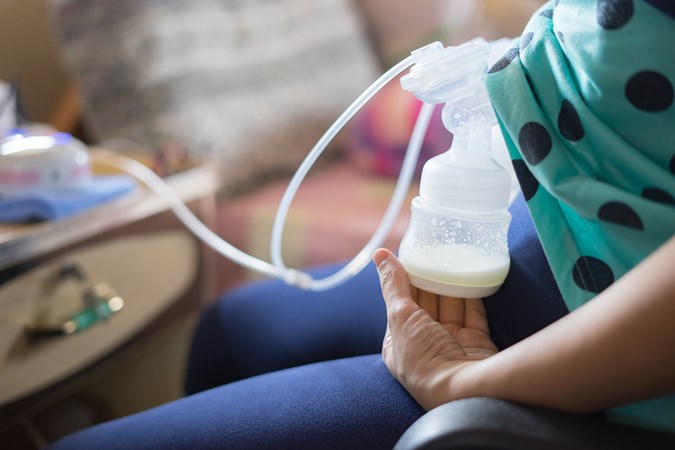
Getty

